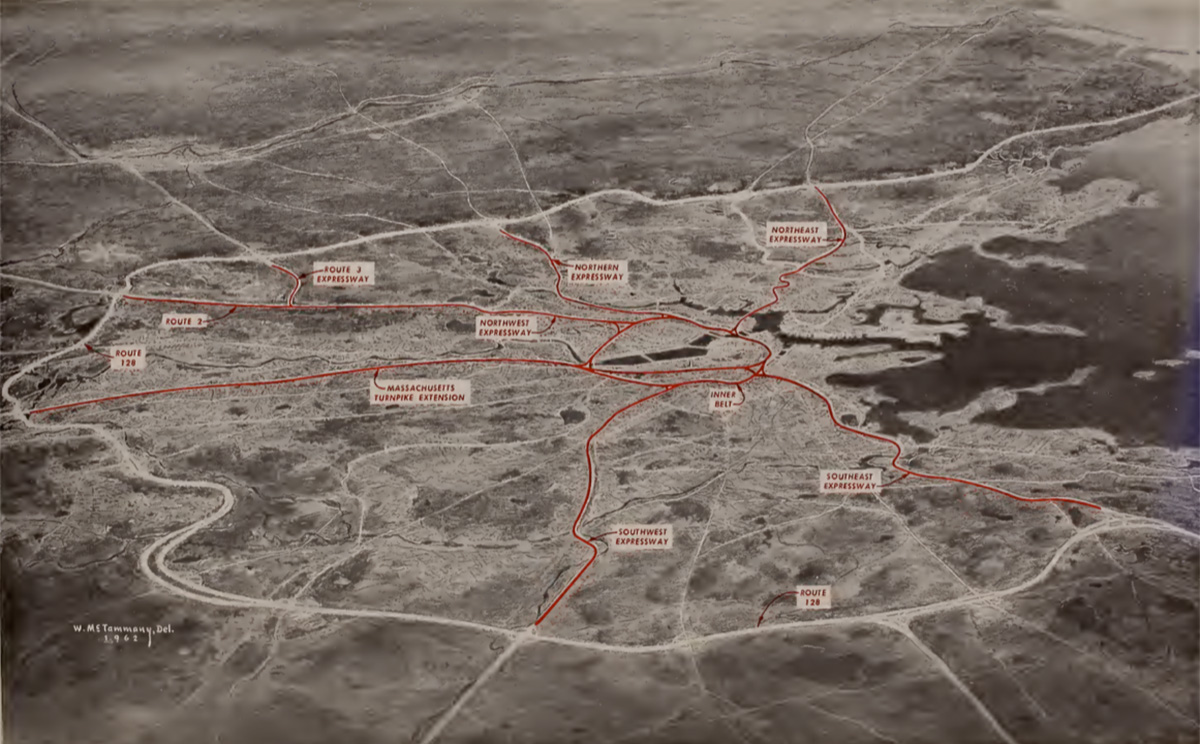
When you cruise around 128…sorry, you thought it was I-95, that belt around Boston? That’s only a number on some signs - and those with a long memory may see any of those as a sign of broken dreams? Nightmares?
More likely the latter.
At the time, Boston was a gaping hole in the I-95 thruway, ending in Canton, and simply restarting in Peabody. Then in 1962, an inner belt and expressway system was proposed — including an eight-mile swath of roadway that would be called the Southwest Expressway.
Part of this had already been trenched out in Boston before Mass. governor Francis Hatch ended this plan which also called for an inner beltway and other roadway projects that would have consumed whole neighborhoods, and turned the city into a giant interchange.
Only the Mass. Pike extension was completed — and we know how long that took.
Another (thankfully) unfinished part of the project was turning Rte. 2 into a through route to downtown, the Northwest Expressway.

Derelict, but not of duty
The extension only got as far as a trench carved into neighborhoods along the Washington St. corridor, especially visible near Chinatown. Part of the plan is finally accomplished, as the ditch has been turned into a roadbed serving the Orange Line, commuter rail, and Amtrak.
And we know how long that took.
This is a rare moment in the annals of politics anywhere that an act of political courage stood in the way of special interests and federal pressure to simply do the right thing for citizens.
In 1970, with the popular hue and cry ringing in his ears, Sargent canceled all highway building inside Rte. 128.
Following the completion of I-93, land taking for the Mass. Pike, and the outcry from New York City which had already been significantly carved up, the next step was pitchforks.
But Sargent made the decision alone; Fred Salvucci, who was the political architect of the Big Dig, remarked that it was as though the governor “jumped off the top of the Prudential Center and hoped that Alan Altshuler (state transportation secretary at the time, and the governor’s only public support) would have a net woven to catch him by the time he got to the bottom.”
“In rejecting the expressway, Sargent’s vision for the future of transportation in Massachusetts also contained the seeds of other big future capital projects that are now integral to the region’s transportation infrastructure, including putting the Central Artery underground and extending Interstate 90 to the Seaport.” — The Boston Globe, via Boston.com
The Big Dig sets things right
Mistakenly thought of as a boondoggle, the Big Dig was an act of restoration.
The elevated highway that divided the North End from the city, was moved underground, and organic access to a treasured Boston neighborhood was restored.
And though the surface roads are, as always, clogged from sunup to sundown, traffic flows efficiently through the tunnel itself.
And the Mass. Pike extension was extended again through the Ted Williams Tunnel all the way to Boston Logan International Airport.
The Old Towne is almost as it was before all these plans were drawn up, plans that still didn’t connect I-95 to the north, unless you count a dotted line as a plan.
The great circle route.
So as you toodle along 128 around Boston — sorry, I-95 — from Peabody to Canton, you may mourn the passing of Massachusetts’ home grown initiative, but let that federal Interstate sign remind you: we once had a governor who had the courage to stand up and yell no! to a lot of well-financed special interests.
References
Inner Belt and Expressway System
Massachusetts Department of Public Works, 1962
via https://ia801309.us.archive.org/12/items/innerbeltexpress00mass/innerbeltexpress00mass.pdf
Transformative decision a half-century ago to scrap I-95 extension still resonates in Boston today
https://www.boston.com/news/the-boston-globe/2022/12/06/transformative-decision-a-half-century-ago-to-scrap-i-95-extension-still-resonates-in-boston-today/
Southwest Corridor (Massachusetts)
https://en.wikipedia.org/wiki/Southwest_Corridor_(Massachusetts)
Thomas House, AIA, is principal of THA Architects, LLC, Stratham, N.H.
